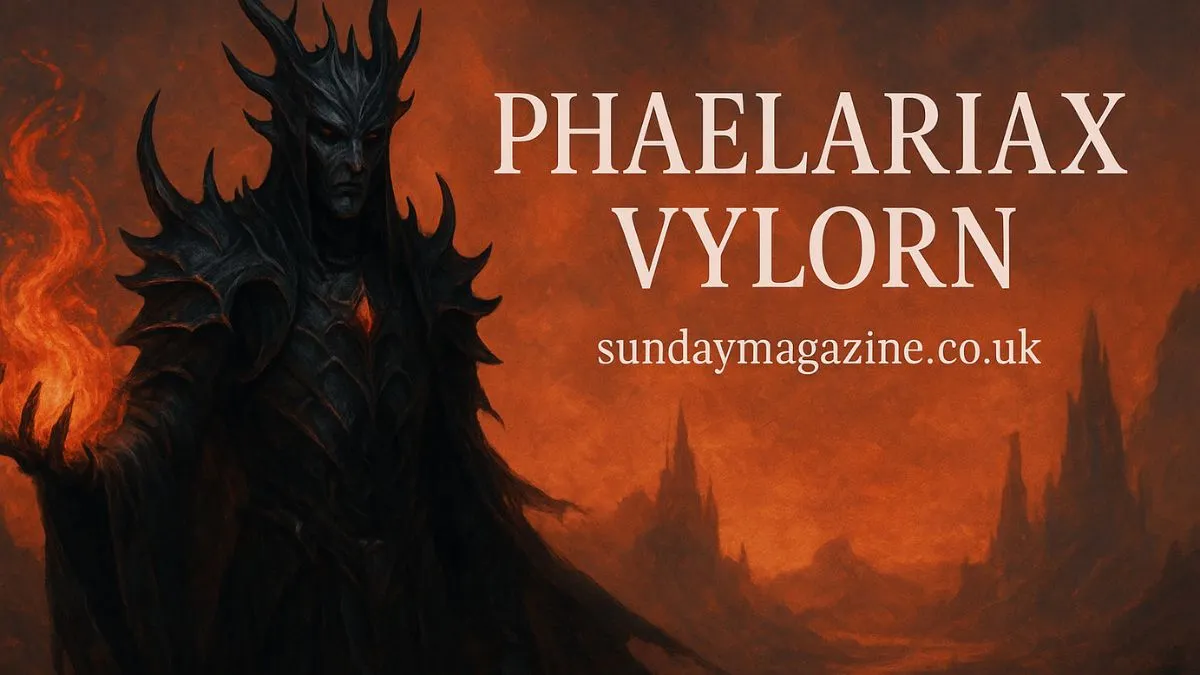In a world driven by technological innovation and an ever-deepening appreciation for speculative design, few concepts captivate the imagination quite like Phaelariax Vylorn. Whether you’re a gamer, a fantasy lore enthusiast, a world-builder, or someone intrigued by the intersection of mythology and artificial intelligence, the idea of Phaelariax Vylorn has likely piqued your interest. But what is it exactly, and why is it garnering attention now?
Phaelariax Vylorn refers to a rich fictional construct—an evolving mythos or character system—designed to bridge narrative depth with interactive experiences. Whether appearing in digital games, tabletop role-playing environments, or literary explorations, Phaelariax Vylorn is rapidly becoming a cornerstone of immersive storytelling.
What is Phaelariax Vylorn?
The Core Concept
At its heart, Phaelariax Vylorn is a hybrid character-archetype or system often used in narrative frameworks, characterized by complex traits, morally grey decisions, and deep interdimensional lore. Think of it as a convergence between high fantasy and dark sci-fi—where mystical energies collide with quantum philosophies.
The term “Phaelariax Vylorn” can refer to:
- A powerful entity or character in a fictional universe
- A framework for storytelling or game mechanics
- A philosophy of design that fuses light and dark narrative elements
Origins and Development
Originally emerging from underground speculative fiction communities, Phaelariax Vylorn has evolved into a layered, multi-platform storytelling tool. Writers and game developers began adopting this concept for its ability to deepen player engagement and narrative complexity.
Applications and Use Cases of Phaelariax Vylorn
In Game Design
Game developers use Phaelariax Vylorn as:
- A central antagonist or protagonist with a customizable backstory
- A lore mechanism that enables dynamic questlines and player decisions
- A blueprint for world-building through interconnected realms and timelines
In Literature and Creative Writing
Authors leverage Phaelariax Vylorn to:
- Create morally ambiguous characters
- Explore themes of redemption, duality, and chaos
- Build multi-layered worlds with evolving mythologies
In Tabletop RPGs
Dungeon Masters and Game Masters use the Phaelariax Vylorn archetype as:
- A living narrative force—part god, part cursed entity
- A source of arcane knowledge or forbidden power
- A recurring mystery or challenge in a long campaign
ALSO READ: How to Get Graven Mass Talisman Elden Ring
Understanding and Using Phaelariax Vylorn
Step 1: Understand the Mythos
Begin by exploring the foundational lore:
- Phaelariax: Often depicted as a being of ancient power, trapped between realities
- Vylorn: Refers to a dying realm or state of entropy from which it draws its essence
Step 2: Define Your Medium
Ask yourself: Are you a writer? A game designer? A DM?
Depending on your focus, adapt Phaelariax Vylorn as:
- A character (literature, games)
- A world or energy source (tabletop, narrative design)
- A philosophy or theme (creative essays, immersive theater)
Step 3: Build Narrative Depth
Use these prompts:
- What is Phaelariax Vylorn’s motivation?
- What forces oppose or ally with it?
- What is the moral cost of interacting with it?
Step 4: Integrate Interactivity
If working in a game or TTRPG, make Phaelariax affect:
- Character alignment changes
- World states or timelines
- Accessibility of forbidden knowledge or powerful items
Step 5: Evolve the Myth
Let the concept grow organically. Phaelariax is designed to change as your world does.
Common Challenges and Misconceptions
Misconception 1: Phaelariax Vylorn is just a villain
Reality: It is not merely evil. It embodies complexity—duality, redemption, tragedy, and immense power.
Misconception 2: Too complicated for new creators
Reality: It’s modular. Start with basic lore and grow into complexity as needed.
Misconception 3: It only fits dark fantasy
Reality: It integrates well into cyberpunk, mythopunk, solarpunk, and more.
Challenge: Keeping Consistency
Solution:
- Maintain a lore bible or reference document
- Use color coding for timelines or character versions
Comparing Phaelariax Vylorn to Similar Constructs
|
Element |
Phaelariax Vylorn | Cthulhu Mythos |
Elder Scrolls Daedric Princes |
|
Origin |
Community-created narrative framework | H.P. Lovecraft |
Bethesda Softworks |
|
Tone |
Ambiguous, complex | Cosmic horror |
Chaotic-neutral/divine |
|
Use Case |
Game design, literature, TTRPGs | Horror fiction, games |
RPGs, lore design |
|
Evolution |
Open source, ever-expanding | Author-restricted mythos |
Corporate/IP-locked |
Conclusion: Phaelariax stands out for its adaptability and richness. Unlike the static nature of IP-locked mythos, it is a living, breathing narrative construct.
Expert Insights and Future Trends
Pro Tips from Worldbuilders:
- Keep the mystery alive. Don’t over-explain.
- Use foreshadowing. Let Phaelariax loom before it appears.
- Let players or readers influence it. It thrives on interactivity.
Future Trends
- AI-powered dynamic storytelling: Using machine learning to evolve Phaelariax based on user behavior
- Cross-platform continuity: Seeing the same entity across games, books, and augmented reality
- Fan-led expansions: Open-world publishing where fans write their own versions
Conclusion
By integrating Phaelariax Vylorn into your narrative or design project, you’re tapping into a living mythos that encourages creativity, philosophical exploration, and emotional storytelling. Whether you’re crafting a novel, developing a game, or running an epic D&D campaign, the possibilities are limitless.
So go ahead—summon the storm, whisper the ancient name, and let Phaelariax transform your world.
FAQ: Phaelariax Vylorn
Q1: Is Phaelariax Vylorn a real mythological figure?
A: No, it’s a fictional construct rooted in modern storytelling and speculative design.
Q2: Can I use Phaelariax in my game or book?
A: Absolutely. It is an open-concept, community-developed archetype meant to be used and adapted.
Q3: Where can I find original stories or content featuring Phaelariax?
A: Check out speculative fiction forums, indie TTRPG zines, and worldbuilding subreddits.
Q4: What makes it different from other dark entities?
A: Its ambiguity, adaptability, and open-source lore evolution.
Q5: Is it beginner-friendly?
A: Yes! Start small with a character sketch or short story and expand over time.





